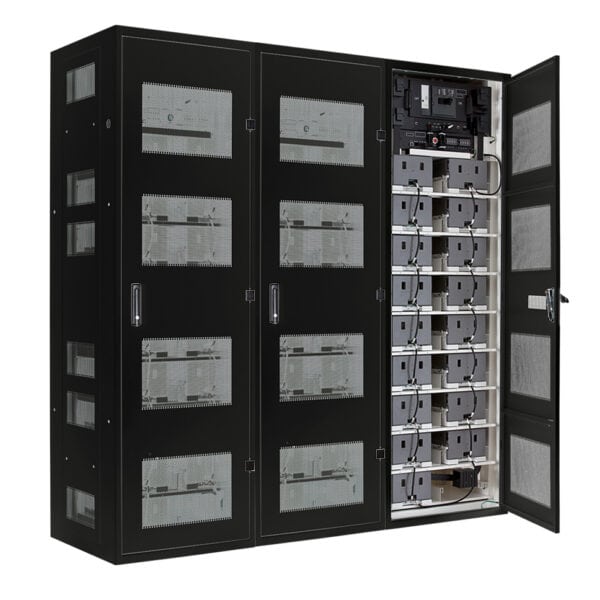For data centre operators, the power demanded by servers and their ancillary equipment is an issue of ever increasing importance; a Gartner’s survey showed that typically 60% of a data centre’s budget is used in providing power and expelling heat. And, as online business and social activity calls for ever more computing capacity, with guaranteed 24/7 availability, this issue will only grow larger. Increasing energy demand, coupled with rising electricity prices, is creating impetus to maximise efficiency – not only to manage costs, but also to meet political and legislative pressure to reduce carbon emissions.
Uninterruptible power supplies (UPSs), with their role of supplying clean, uninterrupted power, are now essential to any data centre. With 24/7 data processing availability now expected as the norm, operating without such power protection has become unthinkable. But the power efficiency of the UPSs themselves must be factored in with that of the systems they protect. And this efficiency depends both on the UPSs’ design topology and on how well they are matched to their critical load. Therefore, data centre operators who take care to optimise their UPS installation will reap significant energy saving benefits.
Fortunately, evolution in UPS technology has meant that a scalable, modular UPS design is now available. A UPS system can now be delivered as a rack containing relatively small UPS modules – and space for more should the need arise. This modular topology allows users to ‘rightsize’, or closely match the UPS capacity to the demand of its critical load. This can achieve up to 96% operational efficiency in true on-line mode, with considerable savings in costs and carbon emissions. And, as variations in end user demand are reflected in the critical load throughout the life of the installation, this efficiency need not be compromised. UPS modules can be incrementally added or removed from the rack, without interruption to supply, to maintain the UPS’s rightsizing and operational efficiency.
Rightsizing a UPS system yields energy savings because the more fully a UPS is loaded, the more efficiently it operates. Modular topology’s contribution to system rightsizing is particularly apparent where UPS redundancy is essential – a usual requirement in today’s data centre environment. Consider for example a load of 400kVA. Using a standalone system, redundancy would be achieved using two 400kVA modules, each of which would be working at 50% loading under normal conditions. Using a modular approach, the same load could be supported, with N+1 redundancy, using eleven 40kVA rack mounted modules – each operating at over 90% loading. This improves efficiency from 90% to 95%, and reduces cooling costs. Total savings over five years can amount to over £85,000 and 475 tonnes CO2.
Modular UPS systems and their benefits owe their existence to developments in power semiconductor technology. In the Seventies, UPS systems utilising an internal step-up transformer appeared – a design still used, especially at the very top end of the power range. The transformer steps up the voltage output from the UPS inverter to a level compatible with the external load. However, it is now possible to use an Insulated Gate Bipolar Transistor (IGBT) device to boost DC voltage levels within the UPS. This in turn allows the inverter to directly produce an output AC voltage level matching the mains input, so eliminating the transformer. With the resultant reduction in UPS size and weight, a rack mounting module rather than a floor standing unit becomes viable.
The move to rack-mounting, modular topology brings many advantages in addition to rightsizing efficiency. The modules are ‘hot swappable’, meaning they can be added to or removed from a UPS system while it remains online. So, keeping the UPS rightsized to a varying critical load can be achieved without interruption to the load supply. The availability of the UPS to its load is also significantly increased as the Mean Time To Repair (MTTR) is substantially reduced.
Physically, the rack’s footprint is two to three times less than a traditional system’s, and the transformerless design is much lighter also. This saving is usually extremely welcome in increasingly space-challenged data centres, as well as reducing transportation and installation costs. Overall, the reduced installation costs and lifetime energy savings add up to a significantly reduced total cost of ownership.


